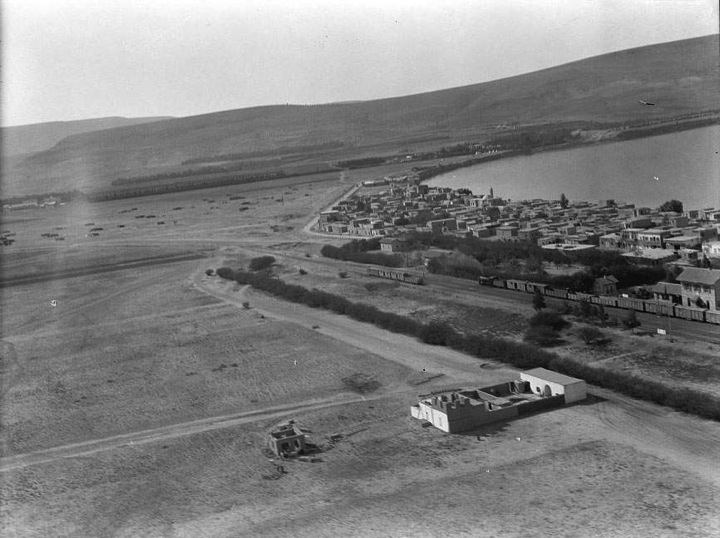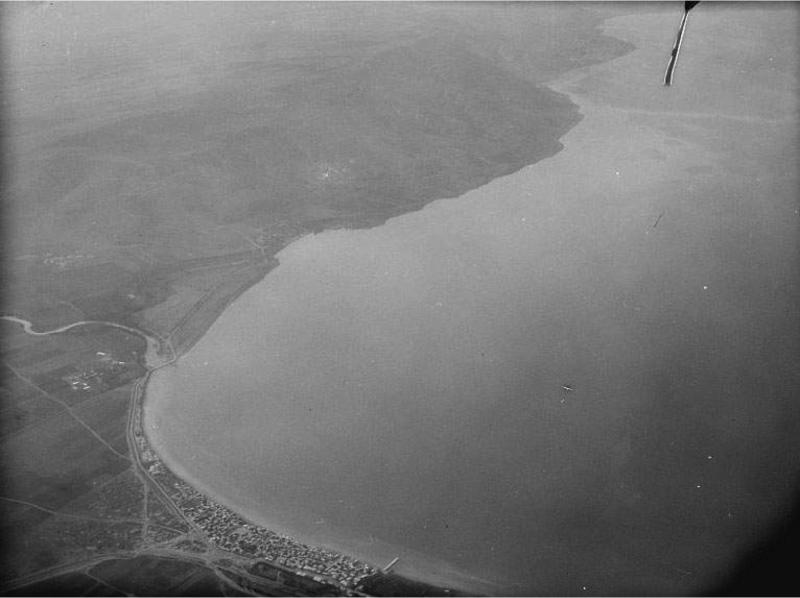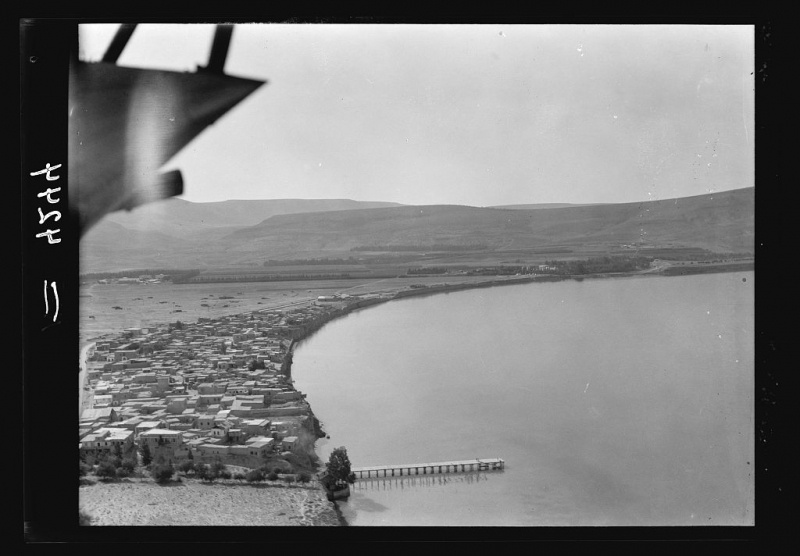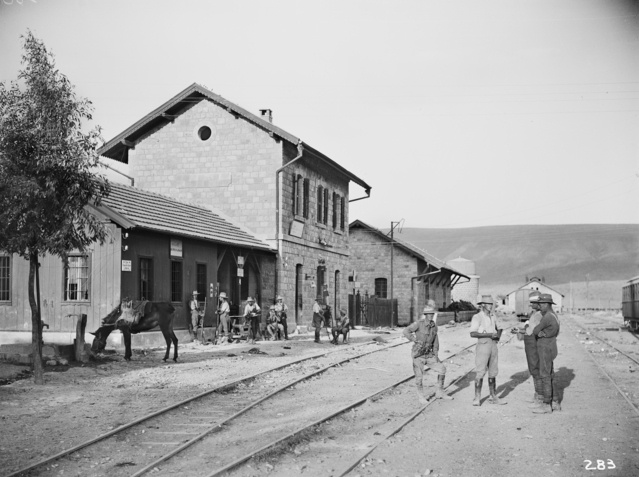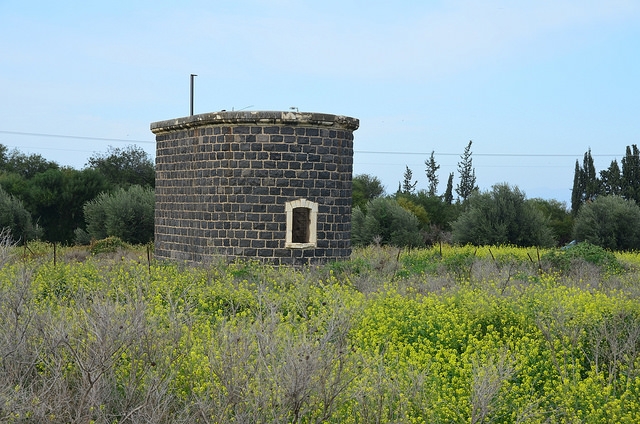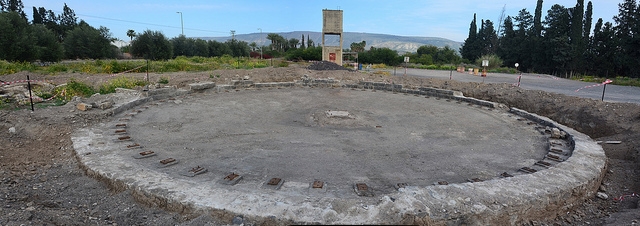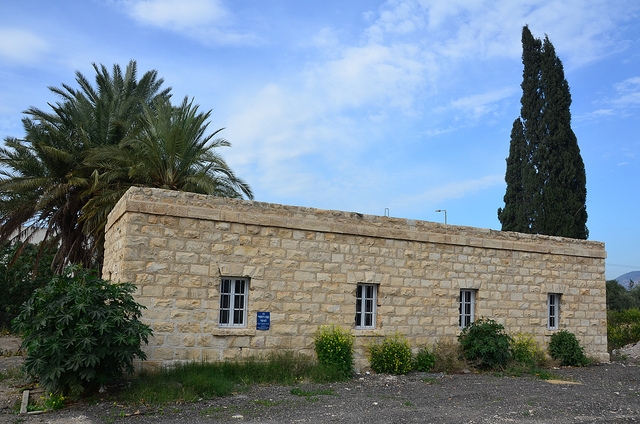Info
District: Tiberias
Population 1948: 4010
Occupation date: 27/04/1948
Jewish settlements on village/town land before 1948: Masada
Jewish settlements on village/town land after 1948: Ma'agan, Tel Kazir
Background:
Samakh before 1948
The village of Samakh was located 10km from the city of Tiberias, on flat land in the Jordan Valley, on the southernmost shore of the lake Tiberias. It was located only a short distance from the border of Jordan and was the largest village of the Tiberias district both in terms of area and population. The village was also a major transportation link, as it connected areas east and west of Jordan, as well as the areas around the lake with the Jordan Valley in the south. Furthermore, the village had a railroad line that ran between Haifa and the Hijaz railway. Samakh was located on a highway that ran along the lakeshore and led to the city of Tiberias in the northwest. Sailing routes also linked Samakh to the city’s harbour.
Samakh was established in the early nineteenth century on top of the remains of the town Kefar Semah, which had been inhabited during the Roman times. In 1812, the Swiss traveler Burckhardt wrote that the village was a collection of thirty or forty dirty mud houses that stood alongside more costly houses that were constructed of black stone.
In 1944-45 the village consisted of 3,460 inhabitants, 3,320 of which were Muslim, 130 Christians and 10 from other faiths. Majority of the population belonged to the Bedouin tribe of the ‘Arab al-Bashatiwa and ‘Arab al-Suqur. In 1945, Samakh was administered by a local council that was created in 1923. Samakh further had two schools, one for boys and one for girls. The village relied on their agriculture and commerce for their livelihood, with their chief crops being grain and banana. In 1944-45, 8,523 dunums was allocated for cereals.
Occupation and depopulation
Following the conquest of the city Tiberias on the 18th of April 1948, Samakh was emptied, however some villagers already left in the early months of the war. After the fall of Tiberias, the Golani brigade shifted its focus towards Samakh, preparing for the occupation. Israeli historian, Benny Morris, stated that the Golani brigade had torched an unidentified village in order to practice for the capture of Samakh. Regaring the capture itself, the History of the Haganah wrote that on the 28th of April the police station in Samakh was occupied and the villagers fled.
Samakh was seized from Israeli control on the following month for a brief period as a Syrian column assisted Iraqi forces in wrestling control of the village, whilst also capturing a nearby Jewish settlement on the 18th of May. However, the same night an attack by the Yiftach brigade resulted in heavy losses among the Syrian defenders of Samakh. However, the brigade still failed to gain control of the village.
On the 20th of May, the New York Times reported that the Israeli air force went into action and attacked the Samakh area. Four heavy artillery pieces was the factor which enabled the Israeli forces to take back the village, as their firepower immediately was unleashed on the Syrian forces. By the next morning, the Syrian forces withdrew from Samakh and the forces from the Golani Brigade reentered the same day.
Israeli Settlements on village lands
In 1937 two settlements were established southeast of the village site: Massada and Sha’ar ha-Golan. Today, they have expanded onto the village lands. In 1949, Ma’agan was built on the village site and later that year Tel Qatzir was constructed also. Two older settlements, Deganya ‘Alef (1909) and Deganya Bet (1920) were built close to the village, but not on the village lands.
The village today
Today, the only remaining evidence of the village are the ruins of the railway station and the water reservoir. On the site, a public park for tourists, a gas station and a factory have been constructed. The nearby lands are cultivated.
----------------------------------
Source: al-Khalidi, Walid (ed.). All that remains: the Palestinian villages occupied and depopulated by Israel in 1948. Washington DC: 1992.


